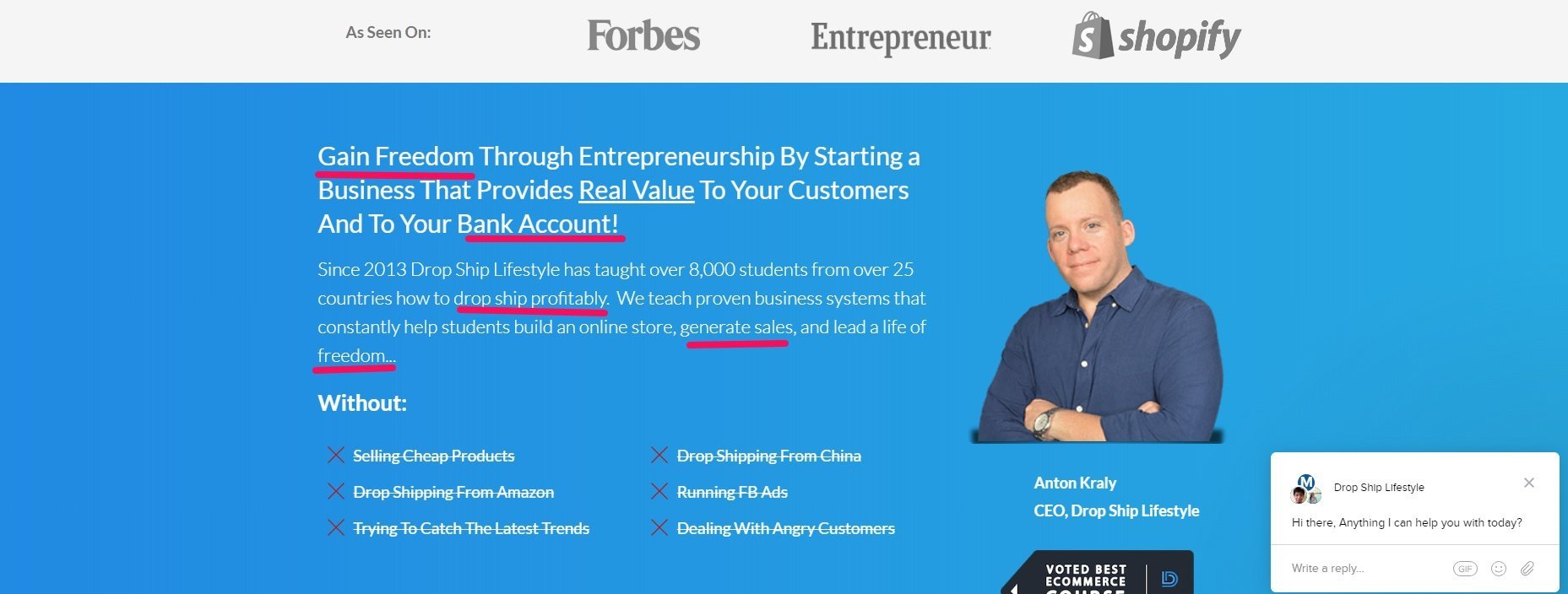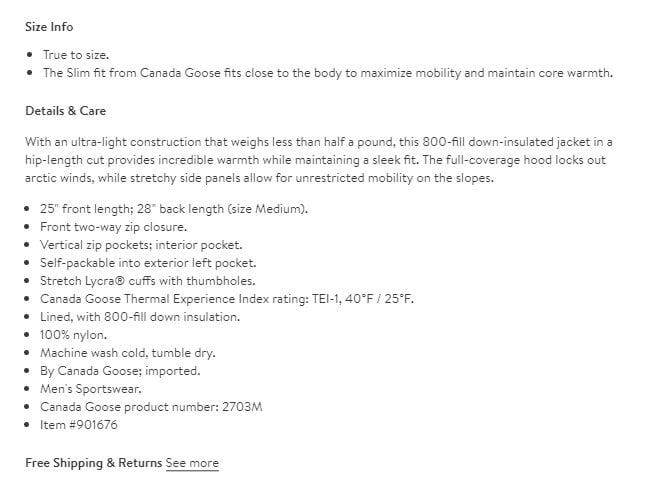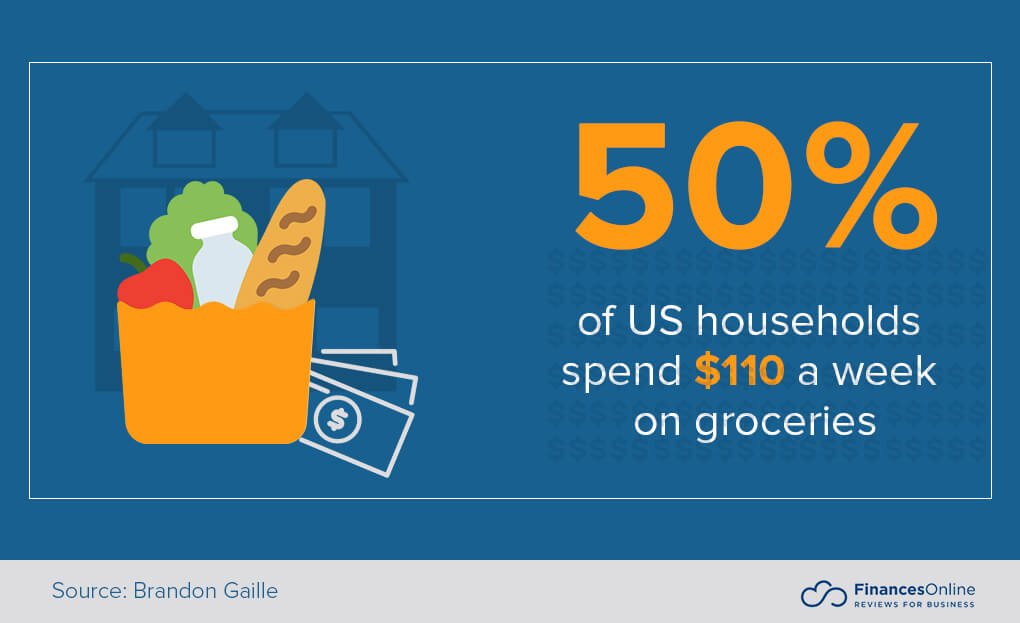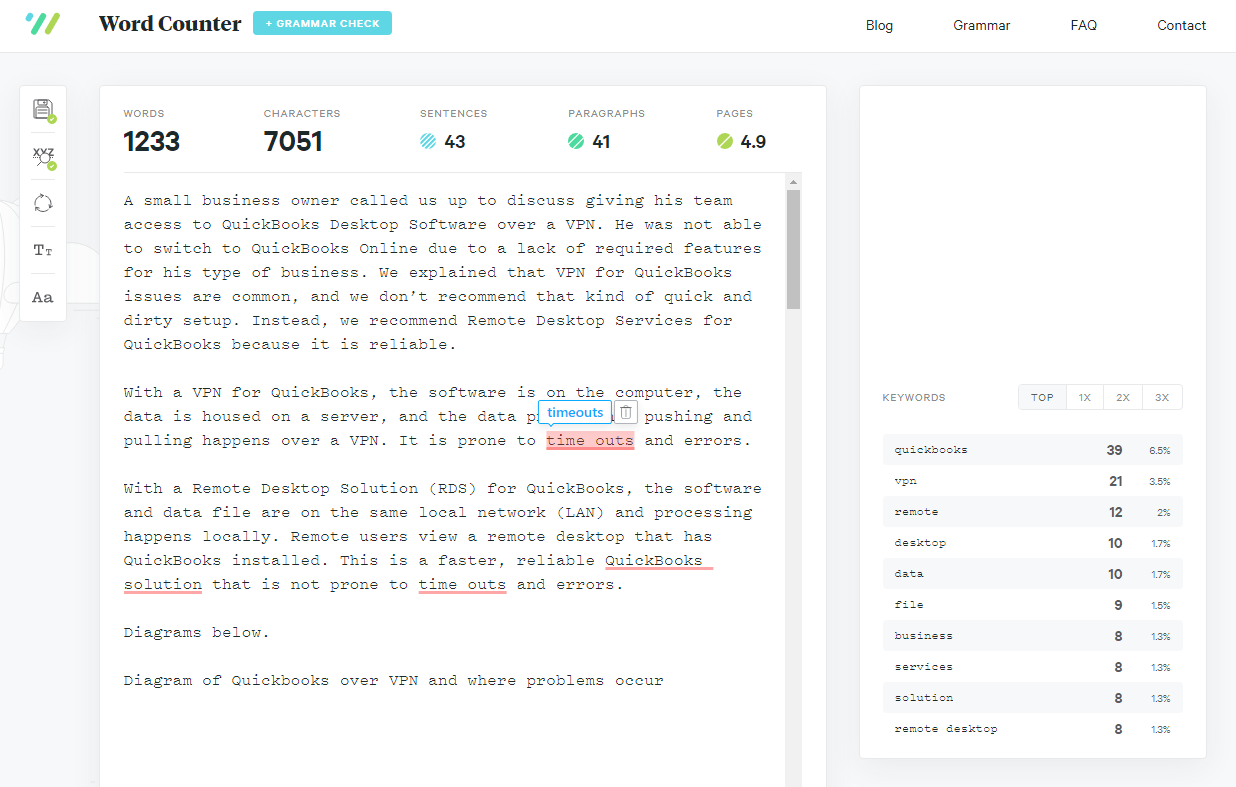Product description writing will make or break your business.
If they suck, you won’t make any money.
Spice them up a bit, and you could see sales pouring in.
It’s expected that by 2021, global e-commerce sales will be close to $5 trillion. Don’t you want a piece of that?

Product descriptions seem so simple. They’re just a couple of sentences, right? They can’t be that important.
That’s where you’re wrong.
I’ve owned several e-commerce businesses, and optimizing product descriptions always noticeably increased conversion rates.
Today I’m going to teach you how to write descriptions that sell like hell. Enjoy!
Product description copywriting principles
These strategies are universal.
Every industry and product can use them. I’ll dive deeper into industry-specific descriptions, but here are some tactics you can apply today to your writing.
You can also check out my copywriting training to get feedback and mentorship from me.
Benefits over features
What’s really in it for your customers? Think about it. You’re never just buying a product, you’re buying emotions.
It doesn’t matter what it is. A cool car makes you feel special and rich. Designer clothing gives you confidence. Acne cream gives people a boost in self-esteem.
These are the benefits of a product. Think of emotions and experiences. Features are just factual pieces of information.
Read my article on features versus benefits to unlock the full potential of this copywriting technique.
Here’s a great example of this copywriting principle being used to sell a dropshipping course.
Note how the copy focuses on gaining freedom, making money, and leading a life you want to live. It’s not just spouting out what the course modules are.

Always state the features, though. These are things like colour, size, materials, etc. They have to be mentioned but never emphasized them. Instead, brainstorm the following:
- Why do your customers really want to buy your product?
- What emotions will they experience as a result of using the product?
- What are their values, beliefs, and pain points?
You want to tie these into your product descriptions to make them jump from the page. They’ll speak to the customer’s real needs, unlike boring bullets that make them more tired than an 8:00 AM algebra class.
Here’s an exercise for you. Imagine we run a men’s dress shoe company, and we’re selling this awesome new shoe below.

It’s made out of calfskin leather and has a memory foam insole. How would you turn these two features into benefits? Think about it before reading the answer ahead.
Personally, I would spin it into something like this:
- “Supple calfskin leather that ages like wine creates the perfect comfortable mold to your feet and feels like new every time you slip it on.”
- “A memory foam insole that feels like walking on clouds and solves feet pain.”
I whipped these up on the spot, but you can see how much better it sounds than just stating the feature.
Try using Jasper’s product description feature to leverage artificial intelligence when writing your descriptions, as well.

Include your target keywords
E-commerce and SEO go hand in hand. Imagine being able to kick back while traffic organically flows to your product pages. That’s possible by targeting the right keywords.
Since you’re selling products, you’ll want to focus on keywords with buying intent. They are also called transaction keywords. Think phrases with “buy,” “best,” or “most affordable,” for example.
To get ideas, open up Ubersuggest or SEMrush. Type in a keyword related to the product description you’re writing. I’ll enter “brown mens dress shoe” to keep my previous example going.

On the following page, you can see that Ubersuggest gives us data like search volume and difficulty score.
It’s wise to target a mix of low, medium, and high-competition keywords. The low competition phrases are like the apples I pick from my neighbour’s tree that hangs over the fence — easy. (Please don’t tell him).

Medium and high search volume words will take more time and authority to rank for, but imagine how much sales they’d generate. My keyword has almost 15k searches every month. I’d be rolling in the dough if I was on the first page for it.
Anyways, take a look at the keyword ideas and write down relevant ones, or export the entire thing as a CSV file.
You only need one or two keywords per product page. But this raises the next question. Where do you put them? Here’s where:
- The product title
- The URL
- Within the description itself
- As the alt text and file name of product photos
- As category and subcategory names
And don’t underestimate the power of Google image search. If you optimize your photos, they can rank higher than standard search results. Look what Moz and Jumpshot found in one of their studies:

Yeah, you read that right. Google Images accounts for almost 27% of all major search engines. Optimize your images, kiddo.
Some other articles I’ve written on SEO that you need to check out include:
- Don’t Do Any SEO Until You Know These Top 7 SEO Best Practices
- The Definite Guide to SEO Writing
- On Page SEO Checklist That Will Skyrocket Your Rankings to The First Page
Tell a story about the product
It’s no secret that the purchasing process is mostly emotional. You might need a product for a logical reason, but we buy many things based on our emotions. This is why storytelling is so powerful.
Customers will become more engaged and emotionally involved in the product you sell. Here’s a perfect example from Loveantiques.

They are selling a 19th-century gong that was captured during the Burmese war by a captain in 1887. The description details the Captain’s name, and his status, and it mentions that the gong has paintwork native to the original area.
It’s simple. Storytelling doesn’t need to be a novel. But if you can mention the history or story of a product, you can capture the attention of customers and their credit cards.
I was looking at classic Ferraris and found this product description that also uses a bit of storytelling.
Remember that it doesn’t have to be a drastic outpour of emotion — although that works — it can just be some simple facts.

You can see that they mention when and where this Ferrari was first unveiled, what model it’s similar to, and some stats. It allows customers to have a deeper understanding of what they’re buying and why it’s important.
Use Jasper’s storytelling feature if you need help coming up with ideas quickly.

Use power words
Free. Special. Rare. What do all of these have in common? They are power words.
Remember that every single word has a feeling associated with it. By using very specific words, you elicit precise emotions in your customers. Placing them ever so carefully in your descriptions can ramp up your conversions because of this.
This product description example from Nordstorm schools us on how to do this.

Some of the copywriting buzzwords they used are “lightweight”, “polished”, “breathable”, and “all-occasion.” They pack everything you need to know about the jacket in one sentence, but those words speak magnitude. It’s almost like one word is a sentence by itself.
When you’re writing product descriptions, ask yourself these questions:
- What are emotions or adjectives that are related to what I’m selling?
- What are single words that sum up the product?
This relates to my next point.
Make descriptions easy to scan
The reality is that no one reads every single word on a page or looks at every little detail. The actual percentage is about 16%.
Think about the last time you were on a blog or shopping online.
Your eyes just scan through to find the important stuff. Since that’s the case, save your customers some time and make it easy for them.
If they can find what they need quicker, that means they’ll get to checkout faster.
To make sure 100% of that 16% which customers read is important, focus on:
- Using short sentences
- Using bullet points and lists
- Breaking apart paragraphs into shorter sections
- Use headers, if needed
How to write product descriptions for clothing
Alright, now that I covered some product description copywriting tactics to use, I’m going to go over some industry-specific examples and approaches to writing product descriptions.
I’ve owned a couple of men’s fashion e-commerce businesses, so let’s begin with clothing.
Something you need to know first — fashion is one of the most difficult markets to succeed in. Conversion rates are typically 1% or lower.
Why? Because it’s hard to show a value proposition for clothing. Plain and simple.
Look at how Canada Goose describes their jacket. They use some of the strategies I spoke about before.

“Ultra-light construction that weighs less than half a pound” makes you feel like you’re already wearing the coat. Customers don’t need to worry that it will be bulky and heavy, which is a common concern for winter jackets. “hip-length cut provides incredible warmth while maintaining a sleek fit”
It cuts straight to the benefits: warmth and looking good.
The last sentence says that it offers unrestricted mobility on the slopes. This hints customers will be skiing and snowboarding while wearing it. Knowing your target market, as well as Canada Goose does, allows you to throw in those small details.
As I spoke about earlier, benefits over features are one of the most important factors for fashion product descriptions. Is it a down-insulated jacket? Cool. What does that mean? Oh, it keeps me warm, and I’ll still look fashionable? Take my money!
Only listing the fabric and basic features will make people yawn. That’s why so many fashion businesses flop. Focus on what the customer really gets out of it. This will generate more sales and make you stand out from the competition.
Here are a few extra tips:
- Mention confidence and self-esteem. Many people are buying clothing to feel better about themselves, and who doesn’t want to feel great when wearing new clothes?
- If you’re selling dress shoes/clothing, tie in how it will improve their professional image, and first impressions and potentially lead to new opportunities.
- Always mention comfort. No one is trying to wear a hoodie that feels like cedarwood.
- For genuinely high-quality items, you can state that they will last longer than cheaper alternatives, saving the customer money in the long term.
- Talk about how they will get attention and looks. This is ideal for flashy products and designer clothing.
How to write product descriptions for jewelry
The jewelry market in Canada brings over $3 billion in revenue alone. Diamond jewelry specifically makes up 38.7% of it.
Do you sell rings, necklaces, or similar products? Lucky you, it’s a very lucrative niche. But it’s also over-saturated.
You don’t want to look like every other jewelry e-commerce store. And one way you can prevent that from happening is with solid product descriptions.
A glance at Cartier’s collection description for this $8,000 bracelet. It’s an incredible jewelry product description example.

This isn’t just a bracelet, it’s “an iconic symbol of love that transgresses convention.” They even finish with the question, “How far would you go for love?”
Customers aren’t buying an 18k yellow gold bracelet. They are buying something that they can give to their significant other to symbolize their love, and that’s priceless.
Okay, enough with the sappiness.
Why does it work?
Because they are tying emotion into the product branding, creating something much more remarkable.
Douglas Van Praet is the author of Unconscious Branding: How Neuroscience Can Empower (and Inspire) Marketing and spoke on this phenomenon.
He stated that we don’t tend to think our way to reason, but rather, we feel our way. Emotions are the base of every decision we make, whether we realize it or not.
So, how can you implement this yourself? Here’s some food for thought:
- If you sell wedding rings, talk about the big day. The flowers. The attention. What the ring symbolizes.
- Similar to clothing, add in bullets about confidence, self-esteem, and how they will be breathless looking down at such a big diamond.
- Say how gold or silver jewelry will match everything and enhance any outfit.
On that note, make sure to listen to my podcast, where I speak with Corey Pattakos, a beauty e-commerce entrepreneur who’s done $200 million in sales.
https://open.spotify.com/episode/1dSFuyf1AIf9DP0fvkwNIT?si=4PNCeEyrRhW0JY-El8Ewzg
Let’s look at some more jewelry writing examples with an earring product description once again from Cartier.

The top of the page says:
A truly wild animal, the Panther is more than a mere symbol for Cartier. It is a timeless icon that is both predatory and elegant, restrained yet always ready to pounce. Roaming free with emerald eyes, onyx muzzle and diamond-set coat, the creations from the Panther Collection make their mark on the world of jewelry.
This achieves two things. One, it aligns with the buyer persona’s personality and traits of being assertive but elegant. Mention of emeralds, onyx, and diamonds implies it is extremely luxurious.

The product page itself has a brief explanation of the earrings and their history.
Seems like a short, though, right?
It’s on purpose. These earrings are a whopping $52,000! You have to contact Cartier for an appointment if you’d like to learn more about them.
That’s where they would truly sell the product and its features.
Jewelry description template
This is a template for jewelry descriptions. Customize it based on the individual product or hire a copywriter to do it for you.
- Headline: Accurately describe the product in an exciting way and use SEO keywords if possible to boost organic traffic.
- Features: What are the specs? These include colour, material, ingredients, etc.
- Benefits: How do the features change the customer’s life? What emotions and experiences will they feel?
- Select the audience: Clearly address who this product is for and why they need it. What pain points will it solve?
- Call to action: Tell them to buy the product in the copy or with add-to-cart buttons.
- Pricing: Clearly display the pricing options, discounts, and savings.
- FAQ: Answer frequently asked questions to overcome objections and increase conversions.
- Metadata: Optimize the title tag, URL, and meta description for a target keyword and proper length.
How to write product descriptions for food
The food industry is booming and never going away.
In fact, the average American spends $110/week on groceries.

If you run any kind of food business, you need delicious and fun descriptions to drive revenue.
Look at Freshly, for example. They sell weekly meal plans, including this steak peppercorn dish.

Note the description. Freshly uses descriptive words to paint a picture of what the food looks and tastes like. It gets your mouth watering!
They also talk about the “boost of fibre and potassium.” Listing or elaborating on nutrition is important because you can position food as being nutritious (a benefit) while remaining compliant.
There are a few main strategies to keep in mind when writing food descriptions:
- Help the reader imagine how delicious the food is. What flavours and aromas are there? Pain a picture in their head.
- What are the macronutrients and nutrition facts? People often want to know exactly how much protein, fats, and carbohydrates they’re consuming.
- List the ingredients, so they know exactly what’s in the meal.
- Position the food based on the audience. I.e. being healthier, losing weight, or building muscle.
How to write skincare product descriptions
Do you run a beauty or skincare business? Great. I’m going to show you how to write descriptions for skincare products next.
It’s an amazing niche because the items you sell offer many different benefits you can communicate.
The industry is also evergreen, meaning it will be around forever. Skincare also deals with people’s self-image, confidence, and emotions, making it perfect for copywriting.
Here is a description from Sephora.

Let’s break down a few parts of this.
Firstly, note how it’s formatted with bold text for each section and boxes separate details, ingredients, shipping, etc. This makes the product copy very easy to read.
Sephora sums up the benefit of this exfoliating powder by saying its visibility brightens, improves skin texture, and cleans pores.
They select the audience it’s for, which is people with normal, dry, oily, or combination skin types.
I also like how Sephora clearly addresses the pain point, which is fine lines, wrinkles, pores, and uneven texture.
They list the ingredients and how they will improve the customer’s skin; no ambiguity here.
What can you take away from all of this? These key points:
- Mention the ingredients of skin care products and how they will visibly and emotionally help customers.
- State the benefits, such as reducing wrinkles, shrinking pores, etc.
- Address the pain points like worrying about the skin texture.
- Select the audience by explaining who the product is for.
- Use accordions to provide more information about shipping, returns, and other key facts.
How to write product descriptions for SEO
If you could generate e-commerce sales without lifting a finger, wouldn’t you?
Of course!
Well, let me get you in on a little secret…
All you need to do is be good at on-page SEO to make that dream a reality.
You can write product descriptions in a way that makes it easier for search engines like Google to find them.
Here’s how to write the best product descriptions for SEO.
1. Focus on at least one keyword
Keywords are the bread and butter of great SEO.
They will help you drive organic traffic to product pages to generate sales and brand awareness.
I recommend using a free tool like Moz to find search terms to target. Begin by entering a word or phrase into the search bar.

It will display metrics about the keyword, like its volume, organic click-through rate, and difficulty.

Moz will also give you keyword suggestions.
Once you do, make sure to insert them in the following places:
- The URL
- The title of the page
- Within the meta description
- As alt text and file names
- In header tags
This brings me to my next point.
2. Optimize the title tag and meta description
The title tag and meta description appear on search engines like this:

Optimizing both of these elements will help you rank higher in Google and achieve a higher click-through rate.
Include keywords in both the title and description while providing the descriptive copy.
Always think, “What would make a customer click this?” and make it unique compared to the other search results.
For example, you might mention the competitive pricing or benefits of the product.
I also suggest using calls to action.
These are words and phrases that tell readers what to do. These include:
- Learn more
- Read about
- Buy
- Purchase
- Check out
- Etc.
3. Add alt text to product images
Alternative text is the words that display when an image can’t load or a visually impaired customer user’s software reads the text aloud.
Seeing as Google released an algorithm update that looks at user experience metrics more heavily, it’s important to tweak things like this.
You can easily edit alt text on most platforms like Shopify, BigCommerce, WordPress, etc.
For example, this is what I see on my screen right now when I upload an image.

Alt text should ideally include a keyword and thoroughly describe the image.
This will also help you rank in the Google image search results.
Most people think about ranking for test results, but images? Who would’ve thought?
It’s also a ranking factor because visually impaired customers have software that reads the alt text aloud.
4. Increase the word count of the description
Word count is important. Read my guide on the best blog post length to learn the science behind the reasoning.
Simply put, producing longer-form content allows you to rank for more keywords and provide increased amounts of information for readers.
It’s a win-win!
Product descriptions don’t have to be the length of a high school English class novel, though.
I recommend that you write at least 250-500 words as it will still be longer than most competitors who rely on a few bullet points.
Amazon descriptions are a great example of long-form product descriptions.
While they start off will bullet points that sum up the major features and benefits, further down the page, you get an encyclopedia about everything.

You can also snoop on competitors and run their product description copy through a tool like Wordcounter.io. It analyzes how many words and characters are on a page.

Use competitors’ word count as a benchmark and write 10% more. This will give your brand a slight edge.
5. Answer FAQ style questions
One of the biggest copywriting principles is overcoming objections.
Unless someone is drooling at their keyword with a credit card out, they will probably have questions and concerns about what they’re purchasing.
You need to resolve these throughout your product description to land the sale.
That’s where FAQ’s come into play.
These allow you to do two things:
- Answer questions that customers are thinking about and ultimately help them convert while making a better purchasing decision.
- Rank for product-specific keywords.
Use previous customer data and interactions to form at least a few questions to present in the form of an FAQ.
You can always add to the FAQ as you receive reviews and speak with customers about their experiences.
However, I recommend adding questions about:
- Shipping
- Returns
- Refunds
- Quality
- Warranties
- Guarantees
- Using the product
- Storing the product
- Etc.
Wrapping up how to write product descriptions
The devil is in the details.
Good product descriptions will make a customer decide in an instant if they want to buy from you or not. Small tweaks today could mean thousands tomorrow.
The first strategy I recommend is putting a bigger emphasis on benefits.
These are the emotions and experiences that a customer gains from using your product. Ask yourself, “What does the customer really get out of it?” or “What are they using the product for?”. This will lead you in the right direction.
Secondly, get your SEO in good shape. It will gradually generate organic traffic directly to your product pages. That means users are already halfway through the sales funnel and that much closer to the sale.
Use tools like Ubersuggest, Keywordtool.io, or Google’s Keyword Planner to find related phrases. Add these in the title, URL, description, and alt text of images.
Next up, tell a story. It keeps attention, explains why a product is important, and elicits emotions.
Stories can be anything from what inspired you to sell the item, the product’s history, or any interesting facts about it.
Throughout all of these strategies, also ensure that you’re mixing in power words. Free. Special. Rare. These are all words with bigger meanings behind them.
Finally, make product descriptions easy to scan. Bullet points and short sentences are ideal.
If you apply what you learned, I can guarantee that you will see an increase in conversion rates. What are you waiting for? Get writing!
Check out my copywriting courses to take your skills and conversions to the next level.















